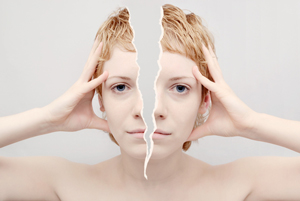Each year the change in seasons and temperatures causes more than cooler air and falling leaves or warm air and spring showers, it also causes sinus headaches. Sinus headaches are painful, with the head throbbing, the throat scratchy and intense pressure behind the forehead, eyes, and cheeks. The sinuses have become inflamed and blocked (or congested) with excess mucous, which has caused the intense pressure. Air-filled bony cavities in the head (which are connected to the nose through small openings) make up these sinuses. The openings have grown congested with excess mucous since a cold, allergy or sinus infection has made the openings infected. It is this surplus of mucous which has caused pressure in the head to build up resulting in a sinus headache.
Sometimes, the sinus headaches may not be as severe as other times since the levels of intensity and length of time will fluctuate. The pain can be only a slightly grating one in the head and then it may be so agonizing that sleep becomes terribly difficult. The symptoms can vary as well with the individual having one or more of the following: headaches with congestion; pain and pressure going from eyes, cheeks, to the forehead; fever and cold shivers; swelling of the face; nasal stuffiness; achiness in the upper teeth; coughing; yellow or green mucous discharge, and fatigue. However, there are times an individual can still be suffering with a sinus headache without these symptoms.

Colds, allergies, fungal or bacterial infections, impaired immune system, structural problems in the nasal cavity, or an impaired immune system can cause pressure changes in the sinuses which then will trigger a sinus headache. Sinus headaches can affect anyone. Sometimes a sinus headache can be mistaken for a migraine headache; however, if the headache is really the result of sinus congestion from an infection, then the individual will usually have a fever, as well.
Some people believe that allergies cause sinus headaches; however, this is mistaken. Allergies are not the direct cause of sinus headaches; yet, allergies do promote sinus congestion which will then cause the sinus headache. However, even if allergies are treated by the doctor, the treatment will not relieve the headache pain. Both allergy and sinus headache will have to be separately treated.
It is important to get treatment for a sinus headache since the treatment can stop the headache. However, if left untreated, a sinus headache can develop into a worse problem if bacteria or a virus moves into the nasal cavity area. If this happens, the person can develop a sinus infection. The sinus infection needs to be treated immediately or both sinus headache and sinus infection can be a serious illness. If the headache is treated in a timely manner, the chances for an infection greatly decrease.

Once the person goes to the doctor, the doctor will physically examine the patient, especially concentrating on the ears, nose, and throat. Sometimes the doctor will order a CT scan (Computed axial tomography) or MRI (magnetic resonance imaging) along with the exam to determine if indeed there is a blockage in the sinuses. First the treatment will focus on relieving the symptom and treating the infection. Antibiotics will be prescribed for the infection with a short period of decongestants or antihistamines for the symptoms. The doctor may also prescribe pain relievers and vasoconstrictors, in order to lessen nasal congestion. If pain is still present, the doctor may also prescribe corticosteroids to further treat the inflammation. Moreover, the doctor will counsel the individual in controlling the headaches, perhaps suggesting the patient purchase a humidifier to provide sinus relief and prevent the sinus headaches. He will also strongly advise his patient not to smoke and to wash hands frequently and avoid pollution by wearing a mask outdoors.
